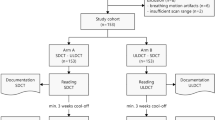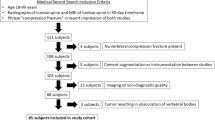Abstract
Study Design
Retrospective comparative study.
Objectives
This study sought to estimate the total radiation exposure to scoliosis patients during the entire treatment course using standard imaging techniques versus EOS posteroanterior (PA) and anteroposterior (AP) views.
Summary of Background Data
EOS is a slot-scanning X-ray system designed to reduce radiation exposure in orthopedic imaging. There are few independent studies comparing organ and total effective radiation dose from standard EOS PA, AP, and lateral imaging versus conventional projection radiographs for children with spinal deformity.
Methods
A total of 42 skeletally immature idiopathic scoliosis patients were treated with bracing (21) or spinal fusion (21) and were followed to skeletal maturity. The number of scoliosis radiographs (PA and lateral) for each patient was recorded. A computerized dosing model was used to calculate estimated patient and organ doses for PA and lateral scoliosis X-rays taken with EOS or computed radiography with a filter (CR) or without a filter (CRF). Assuming that each X-ray taken delivered the same radiation as the phantom calculation, the authors estimated the total effective and organ dose that each adolescent would have received using EOS, CR, or CRF. Annual background radiation is 3 mSv.
Results
Mean number of radiographs per patient was 20.9 (range, 8-43). Patients who underwent surgical treatment had a significantly greater number of X-rays than those who were braced (27.3 vs. 14.5; p <.001). Assuming all films were CR, the mean cumulative dose was estimated at 5.38 mSv. With standard EOS films, the mean cumulative estimated dose was 2.66 mSv, a decrease of 50.6%. An AP versus PA EOS radiograph resulted in an 8 times higher radiation dose to the breasts and 4 times higher dose to the thyroid.
Conclusions
The standard EOS imaging system moderately reduced the total radiation exposure to skeletally immature scoliosis patients. Over the entire treatment course, this represented 2.72 mSv mean reduction or 0.91 years of background radiation. Posteroanterior films significantly reduced breast and thyroid dose.
Similar content being viewed by others
References
Cannon TA, Neto NA, Kelly DM, et al. Characterization of radiation exposure in early-onset scoliosis patients treated with the vertical expandable prosthetic titanium rib (VEPTR). J Pediatr Orthop 2014;34:179–84.
Sharp NE, Raghavan MU, Svetanoff WJ, et al. Radiation exposure— how do CT scans for appendicitis compare between a free standing children’s hospital and non-dedicated pediatric facilities? J Pediatr Surg 2014;49:1016–9.
Hawking NG, Sharp TD. Decreasing radiation exposure on pediatric portable chest radiographs. Radiol Technol 2013;85:9–16.
Stokes OM, O’Donovan EJ, Samartzis D, et al. Reducing radiation exposure in early-onset scoliosis surgery patients: novel use of ultrasonography to measure lengthening in magnetically-controlled growing rods. Spine J 2014;14:2397–404.
Ungi T, King F, Kempston M, et al. Spinal curvature measurement by tracked ultrasound snapshots. Ultrasound Med Biol 2014;40:447–54.
Vila-Casademunt A, Pellise F, Domingo-Sabat M, et al. Is routine postoperative radiologic follow-up justified in adolescent idiopathic scoliosis? Spine Deformity 2013;1:223–8.
Garg S, Kipper E, LaGreca J, et al. Are routine postoperative radiographs necessary during the first year after posterior spinal fusion for idiopathic scoliosis? A retrospective cohort analysis of implant failure and surgery revision rates. J Pediatr Orthop 2014 [Epub ahead of print].
Dietrich TJ, Pfirrmann CW, Schwab A, et al. Comparison of radiation dose, workflow, patient comfort and financial break-even of standard digital radiography and a novel biplanar low-dose X-ray system for upright full-length lower limb and whole spine radiography. Skeletal Radiol 2013;42:959–67.
Ilharreborde B, Steffen JS, Nectoux E, et al. Angle measurement reproducibility using EOS three-dimensional reconstructions in adolescent idiopathic scoliosis treated by posterior instrumentation. Spine (Phila Pa 1976) 2011;36:E1306–13.
Monnin P, Holzer Z, Wolf R, et al. An image quality comparison of standard and dual-side read CR systems for pediatric radiology. Med Phys 2006;33:411–20.
Levy AR, Goldberg MS, Mayo NE, et al. Reducing the lifetime risk of cancer from spinal radiographs among people with adolescent idiopathic scoliosis. Spine (Phila Pa 1976) 1996;21:1540–7. discussion 1548.
Cristy M, Eckerman KF. Specific absorbed fractions of energy at various ages from internal photon sources. Oak Ridge, TN: Oak Ridge National Laboratory; 1987.
Gray JE, Hoffman AD, Peterson HA. Reduction of radiation exposure during radiography for scoliosis. J Bone Joint Surg Am 1983;65:5–12.
Gogos KA, Yakoumakis EN, Tsalafoutas IA, Makri TK. Radiation dose considerations in common paediatric X-ray examinations. Pediatr Radiol 2003;33:236–40.
Tapiovaara MJ, Lakkisto M, Servomaa A. PCXMC: a PC-based Monte Carlo program for calculating patient doses in medical X-ray examinations. Helskini, Finland: STUK (Finnish Centre for Radiation and Nuclear Safety); 1997.
The 2007 Recommendations of the International Commission on Radiological Protection: International Commission on Radiological Protection; 2007.
Preston DL, Cullings H, Suyama A, et al. Solid cancer incidence in atomic bomb survivors exposed in utero or as young children. J Natl Cancer Inst 2008;100:428–36.
Preston DL, Ron E, Tokuoka S, et al. Solid cancer incidence in atomic bomb survivors: 1958-1998. Radiat Res 2007;168:1–64.
Ron E, Preston DL, Mabuchi K. More about cancer incidence in atomic bomb survivors: solid tumors, 1958-1987. Radiat Res 1995;141:126–7.
BEIR VII health risks from exposure to low levels of ionizing radiation, Phase 2. http://www.nap.edu/openbook.php?isbn=030909156X. Accessed June 14, 2014.
Ronckers CM, Land CE, Miller JS, et al. Cancer mortality among women frequently exposed to radiographic examinations for spinal disorders. Radiat Res 2010;174:83–90.
Wrixon AD. New ICRP recommendations. J Radiol Prof 2008;28:161–8.
Society HP. Background radiation: fact sheet. Accessed June 2014.
Deschenes S, Charron G, Beaudoin G, et al. Diagnostic imaging of spinal deformities: reducing patients radiation dose with a new slot-scanning X- ray imager. Spine (Phila Pa 1976) 2010;35:989–94.
Kalifa G, Charpak Y, Maccia C, et al. Evaluation of a new low-dose digital x-ray device: first dosimetric and clinical results in children. Pediatr Radiol 1998;28:557–61.
Doody MM, Lonstein JE, Stovall M, et al. Breast cancer mortality after diagnostic radiography: findings from the U.S. Scoliosis Cohort Study. Spine (Phila Pa 1976) 2000;25:2052–63.
McKenna C, Wade R, Faria R, et al. EOS 2D/3D X-ray imaging system: a systematic review and economic evaluation. Health Technol Assess 2012;16:1–188.
Damet J, Fournier P, Monnin P, et al. Occupational and patient exposure as well as image quality for full spine examinations with the EOS imaging system. Med Phys 2014;41:063901.
Valentin J. Managing patient dose in multi-detector computed tomography(MDCT). Ann ICRP 2007;37:1–79. iii.
Seibert JA. Tradeoffs between image quality and dose. Pediatr Radiol 2004;34:S183–95.
Brosi P, Stuessi A, Verdun FR, et al. Copper filtration in pediatric digital X-ray imaging: its impact on image quality and dose. Radiol Phys Technol 2011;4:148–55.
Author information
Authors and Affiliations
Corresponding author
Additional information
Author disclosures: TDL (none); AAS (none); BAS (none); ANL (none).
Rights and permissions
About this article
Cite this article
Luo, T.D., Stans, A.A., Schueler, B.A. et al. Cumulative Radiation Exposure With EOS Imaging Compared With Standard Spine Radiographs. Spine Deform 3, 144–150 (2015). https://doi.org/10.1016/j.jspd.2014.09.049
Received:
Accepted:
Published:
Issue Date:
DOI: https://doi.org/10.1016/j.jspd.2014.09.049




